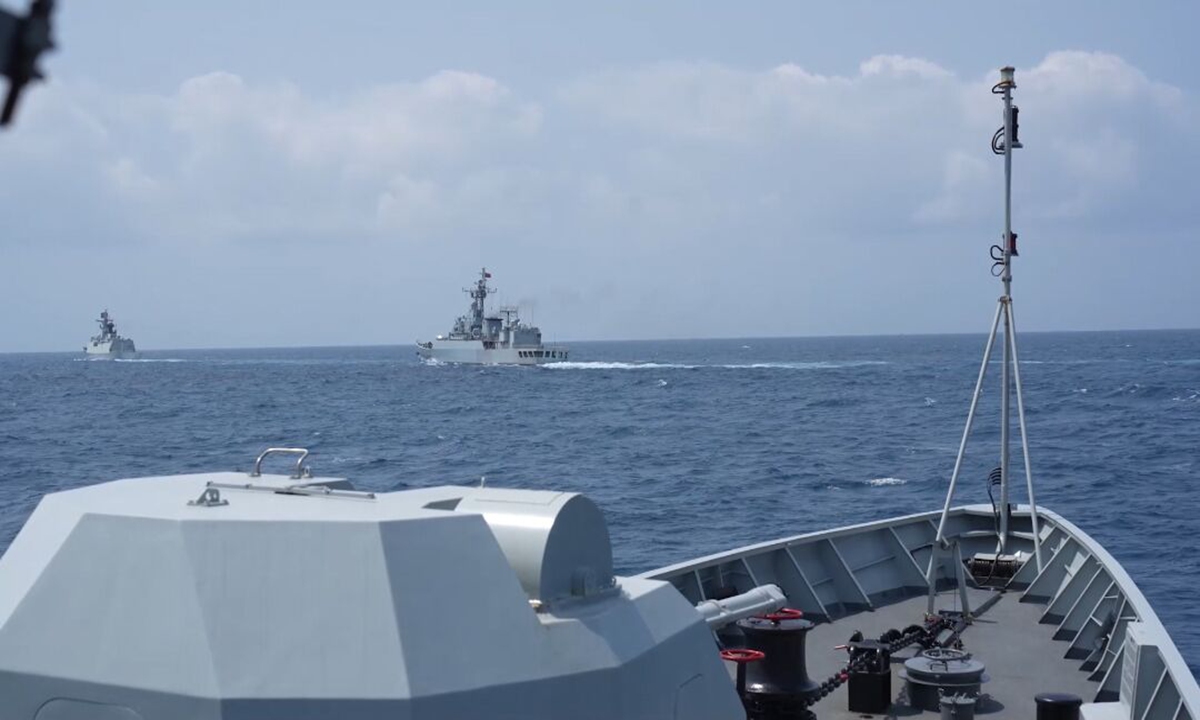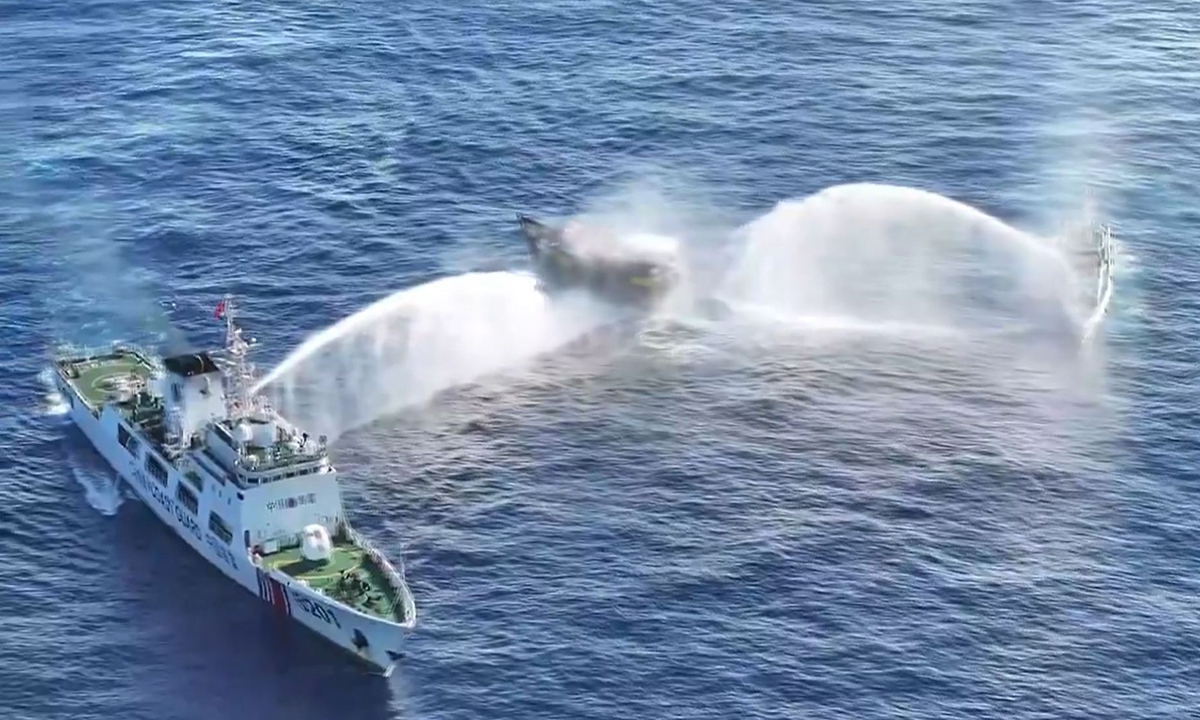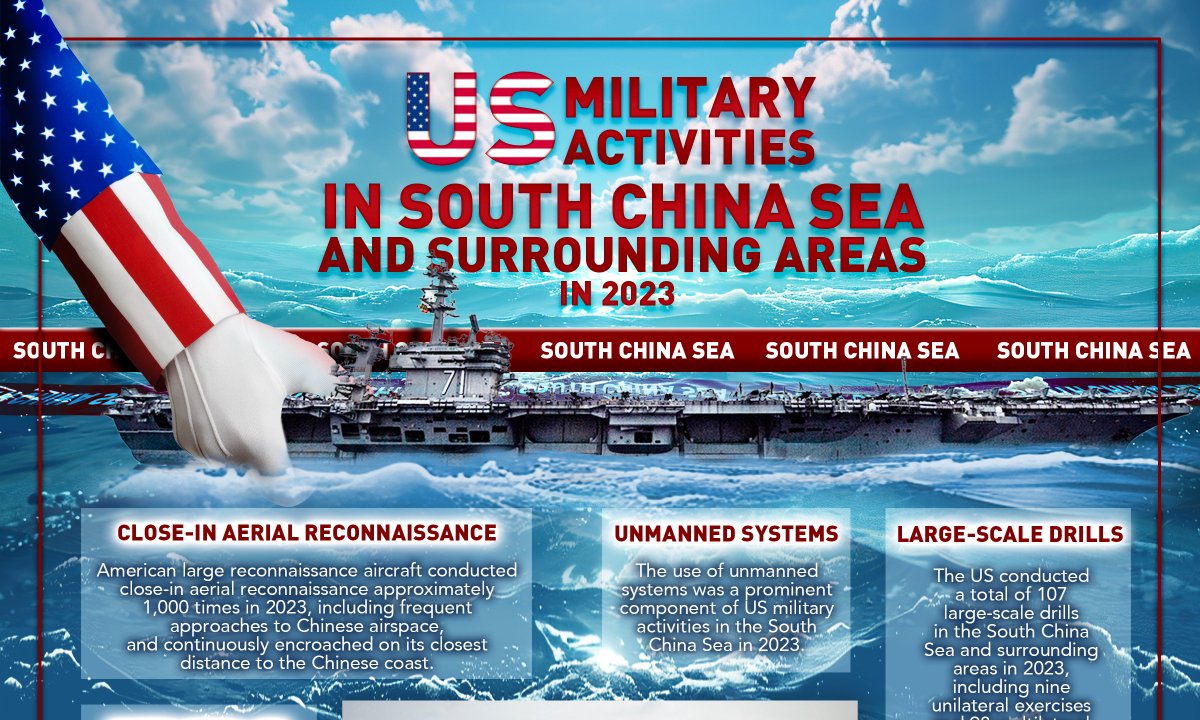Southern Theater Command’s South China Sea patrol sends a clear signal: Global Times editorial

A Chinese navy flotilla of the Southern Theater Command of the People's Liberation Army formed by warships including the Xueshan and Lushan carry out high-intensity and multi-course real combat training in South China Sea, according to the Command on March 30, 2024. Photo: Wechat account of Southern Theater Command
The Southern Theater Command of the Chinese People's Liberation Army (PLA) organized a joint naval and air strategic patrol in the South China Sea on April 7. In a statement, it also stated that "all military activities disrupting the South China Sea situation and creating buzzes are under control." According to some foreign media outlets, this statement indicates that the patrol is aimed at other drills held in the same waters, and is related to the first "maritime cooperation activity" of the US, Australia, Japan, and the Philippines that was conducted on the same day. This cannot be blamed on the rich imagination of the foreign media. The four countries also issued a joint statement before the drills. Although it did not name China, the connotation of targeting China can't be clearer, and its purpose of stirring up the South China Sea and creating hotspots also seems to be obvious to foreign media.
The four countries claimed in their joint statement that the exercise was to safeguard the "the rule of law that is the foundation for a peaceful and stable Indo-Pacific region," and to uphold "freedom of navigation and overflight." However, this is a complete falsehood. Every year, more than 100,000 ships and one-third of maritime trade pass through the South China Sea, and none have ever complained about China "obstructing freedom of navigation in the South China Sea." On the contrary, countries outside this region, such as the US, have frequently provoked tensions and shown off their military muscles in the South China Sea over the years, even without changing their excuses. What they want is not freedom of navigation, but the freedom to "act recklessly" and the freedom to use "salami-slicing" tactics in the South China Sea. This kind of "freedom" will only undermine regional peace and stability.
Therefore, there is no need for relevant parties and foreign media to speculate on the specific targets of the actions of the PLA every time. The naval and air forces and the fleet of the Southern Theater Command are able to respond to emergencies at any time. Whether it is routine patrols or this joint naval and air patrol, the goal of the PLA's actions in the South China Sea has always been very clear, that is, to resolutely safeguard national sovereignty, security, and maritime rights, as well as to maintain peace and stability in the South China Sea. If the concerned parties intend to escalate tensions in the South China Sea and undermine China's territorial and sovereign integrity, then they will become the PLA's target. This is not ambiguous and is the correct signal that the concerned parties should receive from the actions of the PLA.
It is worth noting that Manila's behavior this time is particularly impatient, or one could say, hot-headed. The US, Australia, Japan, and the Philippines have just conducted their first joint exercise, and a source has stated that the Philippines has expressed intention to hold a joint exercise with the three countries several times a year. The Philippine Defense Secretary also said that the military drills on Sunday are the first in a series of activities to build the Philippines' "capacity for individual and collective self-defense." The four countries have put together a total of five naval ships, among which the Philippine ships are retired second-hand goods and cannot be integrated into the formation operations. They declared that they will conduct anti-submarine warfare training, giving Manila the illusion that it can really confront the PLA in the South China Sea. While the four countries are conducting joint exercises under the guise of supporting the Philippines, it is clear who is using whom.
In the joint exercises, what Washington and Tokyo really care about is enhancing the so-called "interoperability." Washington aims to establish wartime intelligence sharing, command mechanisms, coordination of resource allocation, and base usage to deal with the so-called "South China Sea emergencies" and "Taiwan Straits emergencies" through joint exercises and coordinated training under this trendy concept. However, Manila should see clearly its position in all of this. It cannot use a powerful flag to bluff and show off; it can only be used by others. Currently, there is a false narrative within the Philippines that China is "invading" and threatening the national security of the Philippines. In reality, China seeks to manage differences with the Philippines and has no intention to "invade" the Philippines. It is those who claim to be "supporting" the Philippines that are leading the country toward confrontation and conflict.
Imee Marcos, sister of President Ferdinand Marcos Jr., warned that "emotion rather than reason has prevailed in our [the Philippines'] maritime conflict with China and is leading us [the Philippines] down a dangerous path." She pointed out that the entry of foreign donations would only add "fuel to never-ending conflict," and that "there is no shame in pursuing peace." We have said many times that the US is handing over a knife to the Philippines while holding the handle. Shortly before the four countries of the US, Japan, Australia and the Philippines declared they "stand with all nations," China and the US militaries held an annual working group meeting of the Military Maritime Consultative Agreement in Hawaii, with the US side emphasizing the issue of "managing crisis" to China. Managing crisis on its own while instigating others to provoke conflicts -isn't the US always holding the handle of the knife?
The Philippines must understand that it is extremely dangerous to gamble its entire national fate on the balance of regional power games, where not only China but also the entire region's stability forces are on the other end of the scale. No matter how many external chips it adds to its side, it cannot tilt this balance. The Southern Theater Command emphasizes that everything is "under control," meaning that China sees through the Philippines' tricks and its attempts to rally external countries to hype up the South China Sea issue, and is fully prepared. The determination and will of the PLA should not be underestimated, and its responsible attitude to control the overall situation should not be distorted.


